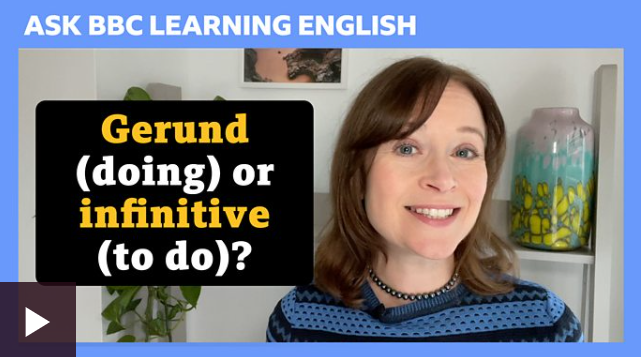Introduction
Rafael has sent us a question. He wants to know when to use the gerund (doing) and when to use the infinitive (to do).
Sian’s 4 tips!
1. After a preposition, we use the gerund. The prepositions can come after an adjective, after a verb or at the start of a sentence. Remember that ‘to’ is often a preposition and when it is, it should be followed by a gerund.
- After having breakfast, I drink coffee.
- I’m interested in learning more about grammar.
- I regret not checking the answers.
- I look forward to meeting you.
2. If you want to use a verb after an adjective, it will usually be in the infinitive form. Note that there are times when we can also use the gerund.
- It’s easy to learn English.
- You’re difficult to please!
3. When you use a verb as a subject, we usually put it in the gerund form. It is possible to use the infinitive but this can sound old-fashioned and formal.
- Playing volleyball is fun!
- Working with animals can be dangerous.
4. Verb patterns are when we use two verbs together. Different verbs work in different ways. Unfortunately, there are no definite rules to tell you which verbs are in which group.
- Some verbs are always followed by the gerund. Verbs talking about likes and dislikes are usually in this group.
I enjoy studying grammar. - Some verbs are always followed by the infinitive. Verbs talking about plans or intentions are usually in this group.
I want to learn some new recipes. - Some verbs can be followed by either and the meaning is very similar or the same.
I like watching TV.
I like to watch TV. - Some verbs can be followed by either, but each has a different meaning.
I stopped having a rest. (I went back to work)
I stopped to have a rest (I started having a rest)
